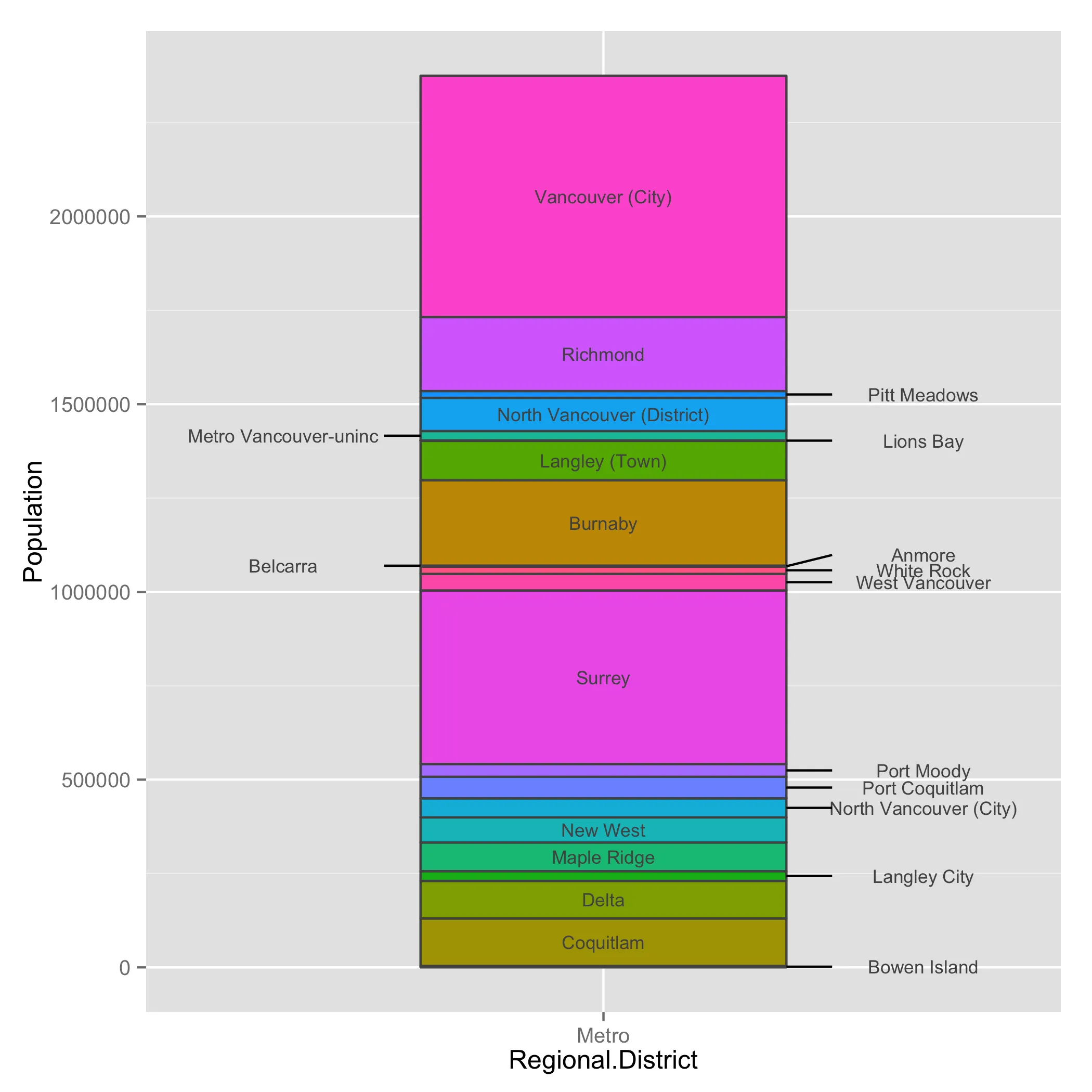我正在尝试创建一个标记的堆积条形图,其中只有一根条形。我的堆栈不总是足够大以适应文本,因此我希望对于不能适应堆栈的标签,可以有指向其右侧标签的引线。或者,如果所有标签都在堆栈右侧且带有引线,那也可以。
我的数据框大致如下:
这是我目前已经实现的内容: 这是我想要实现的内容:
这是我想要实现的内容:
 这是我的代码:
这是我的代码:
我的数据框大致如下:
Regional.District Municipality Population.2010 mp
Metro Bowen Island 3678 1839.0
Metro Coquitlam 126594 66975.0
Metro Delta 100000 180272.0
Metro Langley City 25858 243201.0
Metro Maple Ridge 76418 294339.0
Metro New West 66892 365994.0
Metro North Vancouver (City) 50725 424802.5
Metro Port Coquitlam 57431 478880.5
Metro Port Moody 33933 524562.5
Metro Surrey 462345 772701.5
Metro West Vancouver 44058 1025903.0
Metro White Rock 19278 1057571.0
Metro Anmore 2203 1068311.5
Metro Belcarra 690 1069758.0
Metro Burnaby 227389 1183797.5
Metro Langley (Town) 104697 1349840.5
Metro Lions Bay 1395 1402886.5
Metro Metro Vancouver-uninc 24837 1416002.5
Metro North Vancouver (District) 88370 1472606.0
Metro Pitt Meadows 18136 1525859.0
Metro Richmond 196858 1633356.0
Metro Vancouver (City) 642843 2053206.5
这是我目前已经实现的内容:
 这是我想要实现的内容:
这是我想要实现的内容:
 这是我的代码:
这是我的代码:library(ggplot2)
ggplot(muns, aes(x = Regional.District, y = Population.2010, fill = Municipality)) +
geom_bar(stat = 'identity', colour = 'gray32', width = 0.6, show_guide = FALSE) +
geom_text(aes(y = muns$mp, label = muns$Municipality), colour = 'gray32')
这是否可以自动化? 我可以不使用ggplot2来完成这个任务。谢谢!
